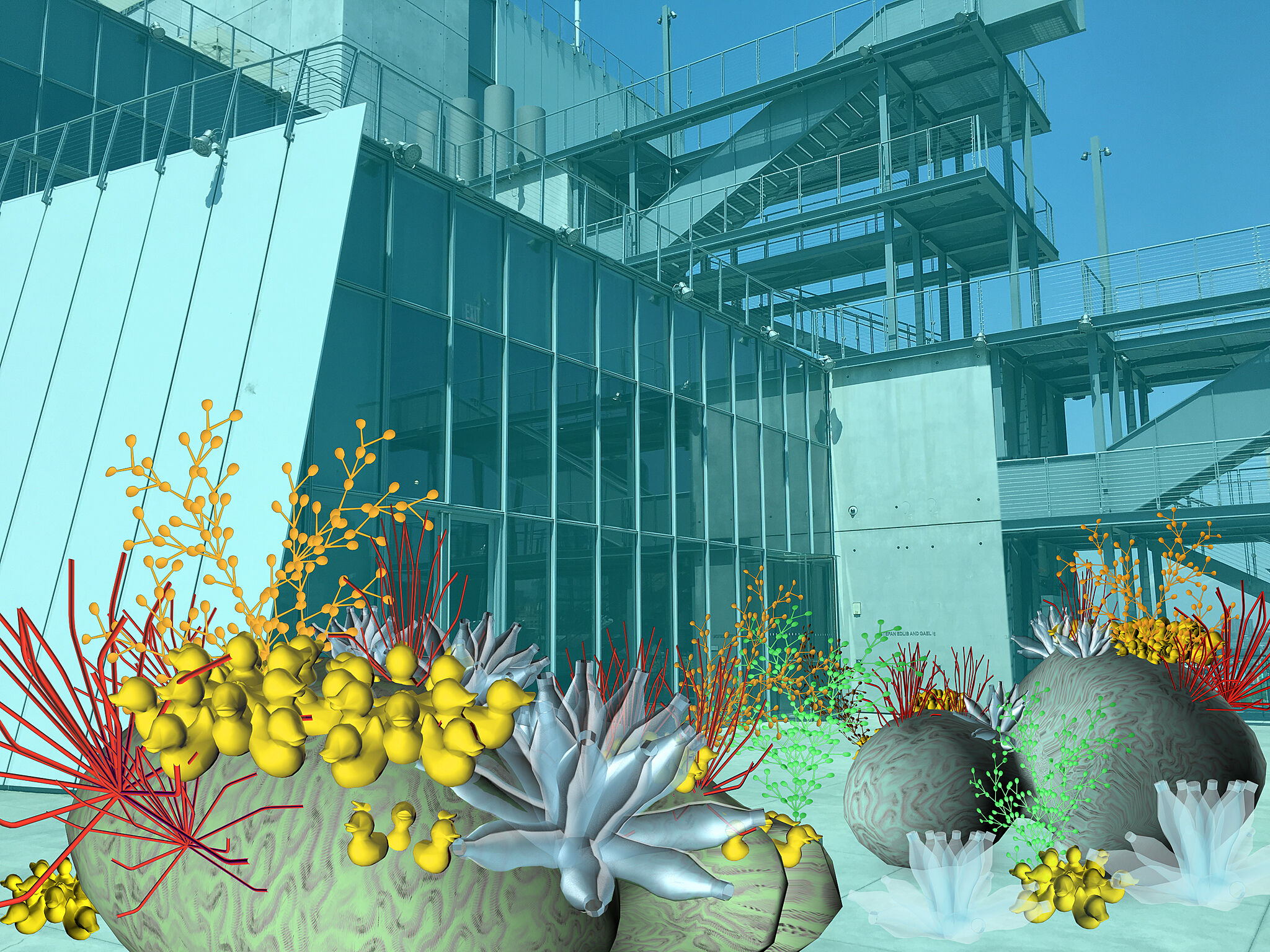Programmed: Rules, Codes, and Choreographies in Art, 1965–2018 | Art & Artists
Sept 28, 2018–Apr 14, 2019
Programmed: Rules, Codes, and Choreographies in Art, 1965–2018 | Art & Artists
Augmented Reality:
Tamiko Thiel
7
Tamiko Thiel’s Unexpected Growth uses augmented reality (AR)—the overlay of virtual elements onto physical reality—to create a parallel dimension of organic growth for the Whitney’s Floor 6 outdoor gallery.
Thiel’s virtual growth consists of plastic refuse and coral-like formations, and offers a playful yet ominous glimpse of a future where sea levels have risen to dangerous levels and ecosystems are irreversibly contaminated. Over the course of each day visitors experiencing the work stimulate the corals’ growth, but once the number of viewers exceeds a certain threshold the accumulated exposure bleaches the formations and causes them to die off. After a lengthy period of overnight rest, the growths are restored to their original vibrancy.
The algorithm used to create the forms of the corals is based on an L-system (or Lindenmayer system), a type of formal grammar developed in 1968 by the Hungarian biologist and botanist Aristid Lindenmayer to model the growth processes of plant development. Through this work, Thiel highlights the inherent connection between natural processes and the generative qualities of code and invites us to contemplate the ways in which we influence and shape the natural environment surrounding us.
Additional support provided by the Goethe-Institut.
Artists
- Josef Albers
- Cory Arcangel
- Tauba Auerbach
- Jonah Brucker-Cohen
- Jim Campbell
- Ian Cheng
- Lucinda Childs
- Charles Csuri
- Agnes Denes
- Alex Dodge
- Charles Gaines
- Philip Glass
- Frederick Hammersley
- Channa Horwitz
- Donald Judd
- Joseph Kosuth
- Shigeko Kubota
- Marc Lafia
- Barbara Lattanzi
- Lynn Hershman Leeson
- Sol LeWitt
- Fang-yu Lin
- Manfred Mohr
- Katherine Moriwaki
- Mendi + Keith Obadike
- Nam June Paik
- William Bradford Paley
- Paul Pfeiffer
- Casey Reas
- Earl Reiback
- Rafaël Rozendaal
- Lillian Schwartz
- James L. Seawright
- John F. Simon Jr.
- Steina
- Mika Tajima
- Tamiko Thiel
- Cheyney Thompson
- Joan Truckenbrod
- Siebren Versteeg
- Lawrence Weiner

